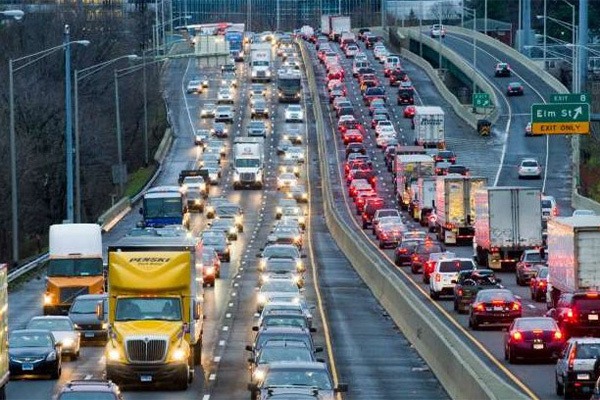“Talking Transportation”
By Jim Cameron
President
CAMERON COMMUNICATIONS INC
Author: “Off The Record: Confessions of a Media Consultant“
I love doing radio interviews, literally “talking transportation”. Of course, having worked in radio for 15 years and then spent 40 years teaching people how to survive media encounters, I’m at something of an advantage. But I do love to turn naïve questions into learning opportunities.
Case in point, this recent exchange:
“So Jim… How do we solve the traffic problem on our interstates and parkways?”, asked the radio talk show host. “Is there room for adding another lane?”
“That’s not the answer,” I said. “Adding lanes to crowded highways just makes them more crowded. Maybe not immediately, but within a matter of weeks or months.” The radio host didn’t believe me, but history proves my point: if you build it, more cars and trucks will come.
Planners and economists call it “induced demand”. By increasing the supply of something (in this case highway lanes) you in effect lower the price (time spent driving) and up goes the demand (bringing more traffic, more delays).
Consider this analogy:
A local store is giving away free food. The crowds soon swarm the establishment, muscling out those really in need. If the store is our highways and accessing them is free (no tolls), it’s no surprise they’re jammed. The only real cost involved in driving is fuel and time: the hours you waste in bumper-to-bumper traffic.
Building highways is also really expensive, especially here in Connecticut. CDOT’s plans to rebuild the I-84 / Route 8 “Mixmaster” in Waterbury came in at between $7 and $8 billion. Now certainly, maintaining existing roads and bridges in the proverbial “state of good repair” is a must. But expanding the highways isn’t the solution to handling more traffic.
There are two answers: tolls and trains.
Driving on our freeways at rush hour shouldn’t be free. Charge for the privilege and you’ll moderate the demand. Some may chose to time-shift their travel, but others may take alternatives, like our trains.
Interstates 95 and 91 are both parallelled by robust train lines priced to encourage ridership. Intrastate fares are kept deliberately low (Bridgeport to Stamford is just $5 one way and New Haven to Hartford is only $8.25, not factoring in multi-trip commuter discounts.)
The billions of dollars not spent to widen those crowded highways would subsidize a lot of train rides. But getting to your home station and from your destination station to work / school (the “first mile / last mile” challenge) is an additional expense that should also be underwritten.
That’s how New York City’s impending “congestion pricing” revenue will keep funding the bus and subways. Those willing to pay the price for driving in midtown should see less traffic and a faster trip. Nobody is suggesting widening NYC’s highways.
So, sorry all you talk show experts out there, the solution to our crowded highways isn’t wider highways. The simple mantra “adding one more lane should solve our problems” is just a never ending race to carmageddon.
Jim Cameron is founder of the Commuter Action Group and advocates for Connecticut rail riders. His weekly column “Talking Transportation” is archived here. You can contact Jim at [email protected].”

